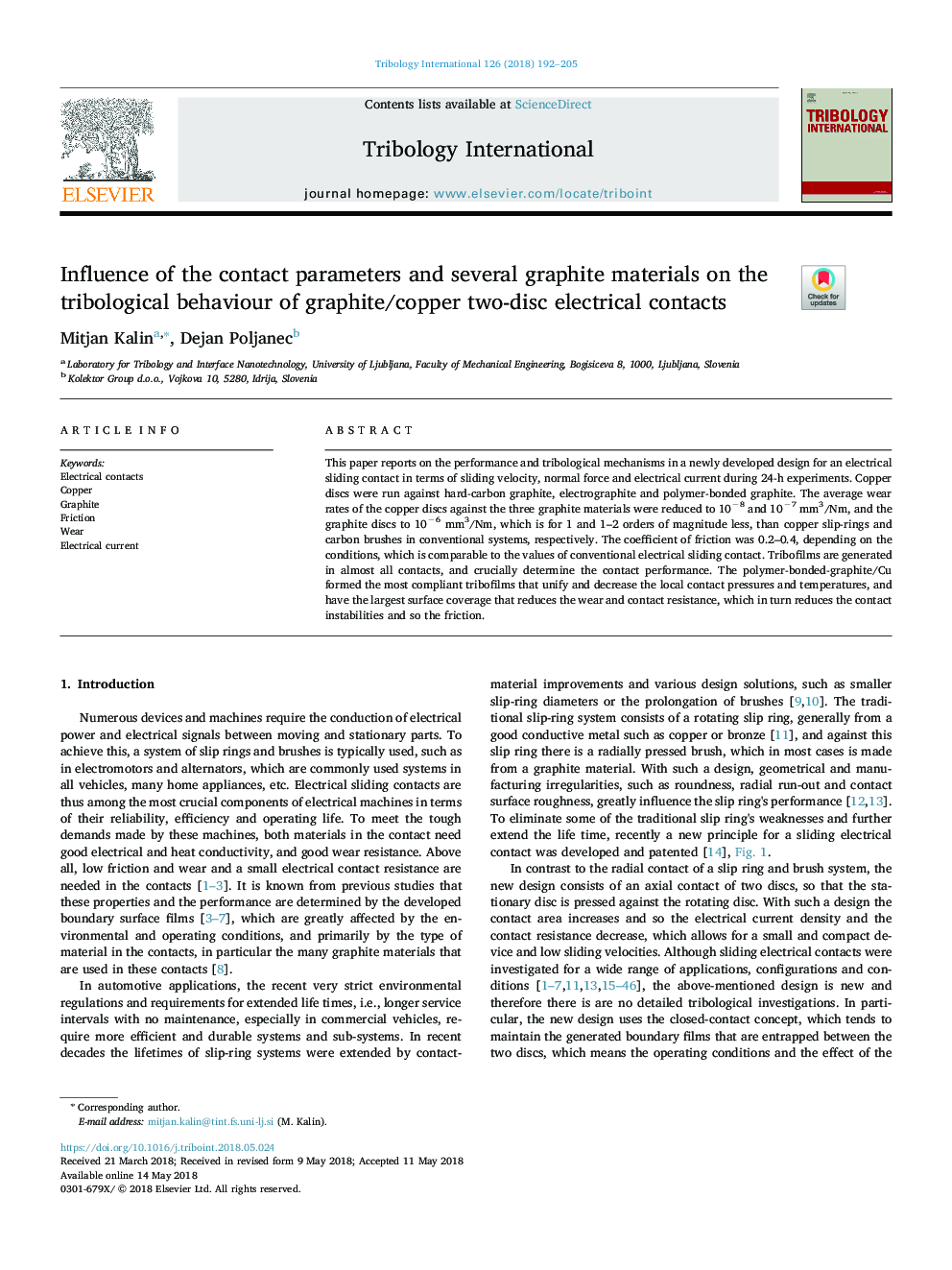| Article ID | Journal | Published Year | Pages | File Type |
|---|---|---|---|---|
| 7001558 | Tribology International | 2018 | 14 Pages |
Abstract
This paper reports on the performance and tribological mechanisms in a newly developed design for an electrical sliding contact in terms of sliding velocity, normal force and electrical current during 24-h experiments. Copper discs were run against hard-carbon graphite, electrographite and polymer-bonded graphite. The average wear rates of the copper discs against the three graphite materials were reduced to 10â8 and 10â7 mm3/Nm, and the graphite discs to 10â6 mm3/Nm, which is for 1 and 1-2 orders of magnitude less, than copper slip-rings and carbon brushes in conventional systems, respectively. The coefficient of friction was 0.2-0.4, depending on the conditions, which is comparable to the values of conventional electrical sliding contact. Tribofilms are generated in almost all contacts, and crucially determine the contact performance. The polymer-bonded-graphite/Cu formed the most compliant tribofilms that unify and decrease the local contact pressures and temperatures, and have the largest surface coverage that reduces the wear and contact resistance, which in turn reduces the contact instabilities and so the friction.
Related Topics
Physical Sciences and Engineering
Chemical Engineering
Colloid and Surface Chemistry
Authors
Mitjan Kalin, Dejan Poljanec,
